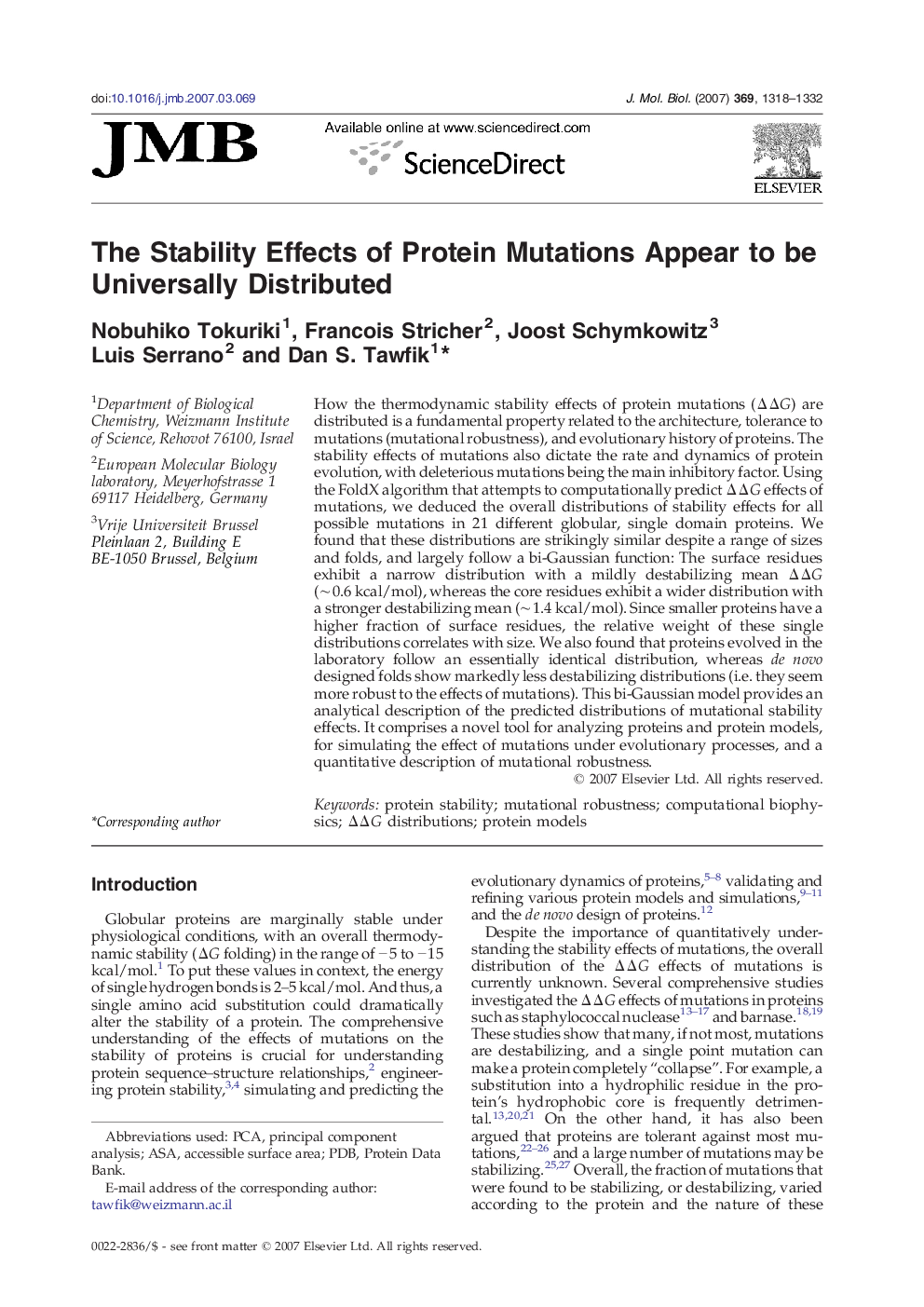| Article ID | Journal | Published Year | Pages | File Type |
|---|---|---|---|---|
| 2188371 | Journal of Molecular Biology | 2007 | 15 Pages |
How the thermodynamic stability effects of protein mutations (ΔΔG) are distributed is a fundamental property related to the architecture, tolerance to mutations (mutational robustness), and evolutionary history of proteins. The stability effects of mutations also dictate the rate and dynamics of protein evolution, with deleterious mutations being the main inhibitory factor. Using the FoldX algorithm that attempts to computationally predict ΔΔG effects of mutations, we deduced the overall distributions of stability effects for all possible mutations in 21 different globular, single domain proteins. We found that these distributions are strikingly similar despite a range of sizes and folds, and largely follow a bi-Gaussian function: The surface residues exhibit a narrow distribution with a mildly destabilizing mean ΔΔG (∼ 0.6 kcal/mol), whereas the core residues exhibit a wider distribution with a stronger destabilizing mean (∼ 1.4 kcal/mol). Since smaller proteins have a higher fraction of surface residues, the relative weight of these single distributions correlates with size. We also found that proteins evolved in the laboratory follow an essentially identical distribution, whereas de novo designed folds show markedly less destabilizing distributions (i.e. they seem more robust to the effects of mutations). This bi-Gaussian model provides an analytical description of the predicted distributions of mutational stability effects. It comprises a novel tool for analyzing proteins and protein models, for simulating the effect of mutations under evolutionary processes, and a quantitative description of mutational robustness.
